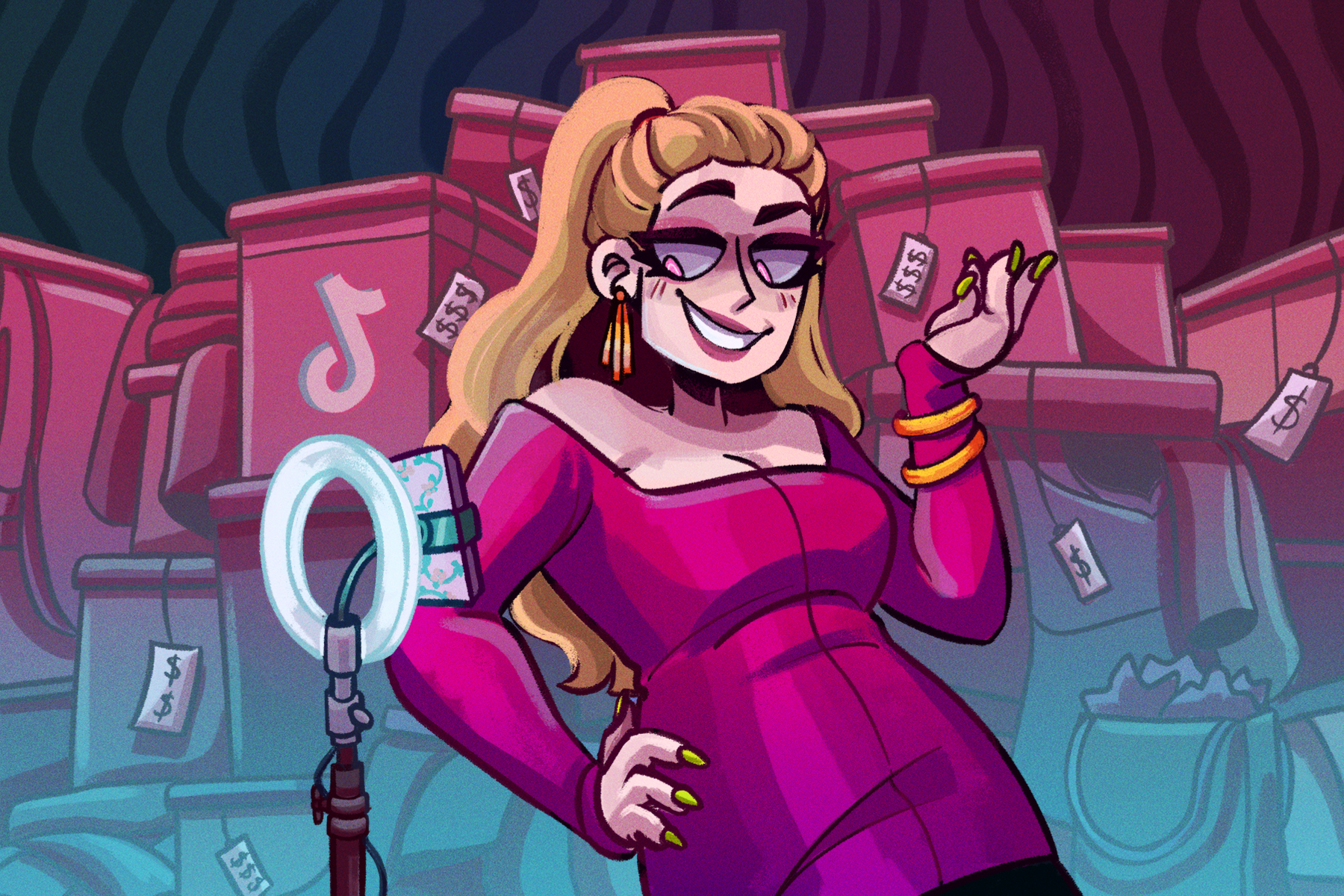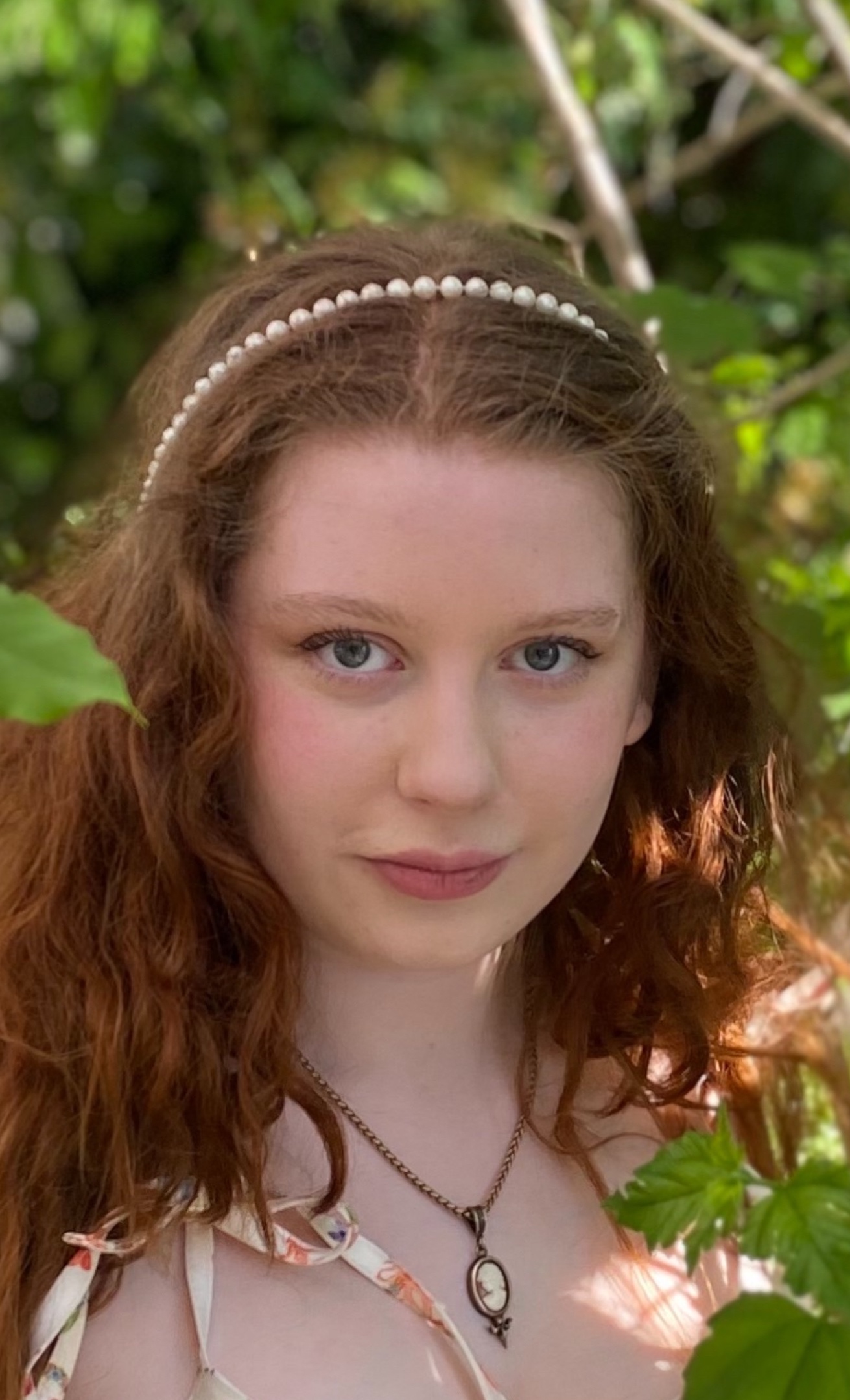To follow modern trends is to adorn oneself head to toe in the gaudy fabulousness of early 2000s fashion — rhinestones, hot pink and all — only to be told the following week that minimalism is the new elite style. “Fashions fade, style is eternal,” Yves Saint Laurent once proclaimed, but in the age of TikTok and TikTok microtrends, the idea of personal style is becoming muddied.
The term “cheugy” — pronounced CHOO-gee — was coined by judgmental Gen-Z TikTok users to describe overused trends. Cheugy revolves around past pinnacles of fashion that are now seen as unstylish, ranging from skinny jeans to the mid-2010s overly filtered Instagram aesthetic. If what fashion legend Saint Laurent said is true, and style is eternal, it’s hard to understand why people are mocked for what they enjoy and are instead pressured to purchase fast fashion from companies like Aliexpress or SHEIN.
According to one disturbing statistic, “We discard 92 million tons of clothes-related waste each year.” Because of the consistent desire to consume new trends, people buy cheap, accessible garments from fast fashion brands. These cheap styles damage the environment and are made possible because of unethical labor practices, like paying workers barely enough to live off. As TikTok weaves a web of microtrends, it is important to reflect on the problematic nature of its most famous fads.
1. House of Sunny’s “Hockney Dress”
Known for its enticing bold green spiral pattern and bodycon silhouette, it is understandable why the “Hockney Dress” became famous on TikTok in summer 2020 after Kendall Jenner was seen wearing it.
The dress was inspired by prolific modern artist David Hockney, adding another level of appeal to the already delectable garment, which resembles a Granny Smith apple with its vibrant hue. But, as audiences learned from the witch in “Snow White and the Seven Dwarfs,” not all apples are created equal — some are tainted with something sinister, only replicating that sweet taste.
With a somewhat hefty price of over $130, it is unsurprising that companies like SHEIN quickly jumped on the bandwagon to make dupes of the London brand’s garment at affordable prices, while paying their workers almost nothing. As the sundress infiltrated TikTok, the original dress became difficult to find and was continually out of stock. Vogue gave it a cult-like status in the fashion world.
The advice “the higher you rise, the harder you fall,” does not discriminate with trends, and this was the case with the Hockney dress. When it became overly popular — #houseofsunny currently has 48 million views on TikTok — influencers labeled the garment as cheugy and overdone, actively canceling it. TikToker @vpettorelli went to social media to call out the problematic nature of microtrends after she saved up money to buy the authentic dress.
“As we all know she [referring to the dress] was more famous last year because of Kendall Jenner. Now on TikTok, it’s popular to roast this dress into shreds because it’s not considered cool anymore.” After proudly proclaiming she will continue to wear the dress because she likes it, viewers are left to wonder if TikTok microtrend enforcers have become the “Mean Girls” of the modern age, using clothes as venom to make people feel out of style.
2. Coconut Girl
Hibiscus print, skimpy silhouette and vibrant colors reminiscent of an early 2000s vacation to Florida — what’s not to love about the “Coconut Girl aesthetic”? Channeling one’s inner Paris Hilton or favorite “H20: Just Add Water” character, the beachy style took TikTok by storm in summer 2021. But, as fall rolled around, the trend quickly dissolved into the abyss, rendering the fast fashion garment production that supports it useless.
The Coconut Girl aesthetic is quite similar to the 2019 VSCO girl trend, which also focused on a bright-colored, casual, beachy feel. But, since the VSCO girl style was long ago deemed cheugy, people didn’t think to recycle their scrunchies or beach sandals. Instead, they consumed even more fast fashion.
When trends come and go in the blink of an eye, one begins to wonder how sustainable this pattern of love, then instant disposal, is on a long-term scale. According to a recent statistic, “One in three young women in Britain consider a garment worn twice to be old.”
While it is the responsibility of consumers to shop more sustainably — thrifting is a fabulous, affordable option — it is also imperative that lawmakers and people in power use their influence to change the harmful practices of the fast fashion industry. That way, when people go coconuts over trends like the Coconut Girl aesthetic, it will last longer than two months.
3. Mass-Produced Crochet
Crochet made a comeback in 2021 fashion, and with its nostalgic patterns and granny-chic texture, it is undeniably lovable: Harry Styles was seen wearing a primary-colored, patchwork crochet cardigan, and British Olympic diver Tom Daley was spotted crocheting on the sidelines during the women’s springboard finals at the 2021 Tokyo Summer Olympics.
The main appeal of crochet garments lies in their crafty domesticity, being something a grandmother could be pictured lovingly creating for her grandchild by the fireplace. Crochet defines slow fashion. But, as crochet caught on, fast fashion felt the need to capitalize on the trend. The twisted irony is that crochet cannot be made by a machine, meaning brands like H&M or Pretty Little Thing are having workers create the pieces painstakingly by hand, being paid pennies.
Ethically, it is unlikely that workers are being properly compensated for the garments they make, seeing that fast-fashion companies usually charge less than $20 for crocheted clothing items that take hours to make.
As an alternative, one can support ethical crochet businesses, such as the talented @oakcitycrochet on TikTok, who discusses the problems with fast fashion crochet on her page. Or there’s @charliseyscrochetcloset, who sells adorable crochet dolls to raise money for a service dog.
4. Twee
Defined by A-line dresses, kitschy patterns, oversized collars and everything manic pixie dream girl, “Twee” is a 2010s style revival that has taken TikTok by storm. Videos, often serenaded by the music of twee queen Zoey Deschanel, discuss TikToker’s love or hatred of the quirky, “nerdy” microtrend. Behind the Wes Anderson character facade, there is a more distinctive problem with the trend cycle. Before twee had taken off, people were taking to TikTok to bash the trend as ugly, especially since just months prior, mid-2010s fashion was consistently made fun of for its poor taste.
The belief that the trend cycle has a 20-year turnaround rate is a thing of the past, as trends from just a few years ago are coming back — meaning people are constantly changing their wardrobe to fit what is in style, and not wearing garments for years like they once did. Twee has, as reported by I-D, a history of catering to thin, cisgender, white women and lacks the inclusiveness that should be a given in 2022 fashion. With the revival of twee, fashion has the ability to be inclusive of all people, letting people embrace their inner “geek.”
5. Patchwork Jeans
With its rough edges, varying shades of blue denim and repurposed feel, patchwork jeans have been seen on TikTok and runways alike in 2021 and 2022. Brands like SHEIN have participated in the trend, with garments deceptively appearing to be made from old clothing scraps, when they’re actually mass-produced and made uniform in appearance. On average, around 1,800 gallons of water are needed to make just one pair of jeans.
Fast fashion brands are taking this fleeting trend and using a scrap fabric aesthetic to sell it, creating garments that will quickly be ditched despite the excessive amount of water required to produce them. Regardless of the problematic nature of unethical clothing, patchwork jeans have a hopeful possibility of turning to a more sustainable direction, as slow-fashion brand Fanfare has done, reusing U.K. textile waste from landfills to create unique pieces that are ethically produced and great for the planet.
As adults and children alike toil in cramped factories in Bangladesh or Vietnam, crocheting a garment that will quickly be disposed of or sewing a brightly covered top that will quickly be classified as out of style, people go on SHEIN shopping sprees, make fashion videos on TikTok, or change their aesthetics week by week.
One can only hope, as the reality of fast fashion begins to circulate, that society can pick up the metaphorical sewing needle and create the most beautiful, ethical tapestry of thoughtfully produced fashion.

















